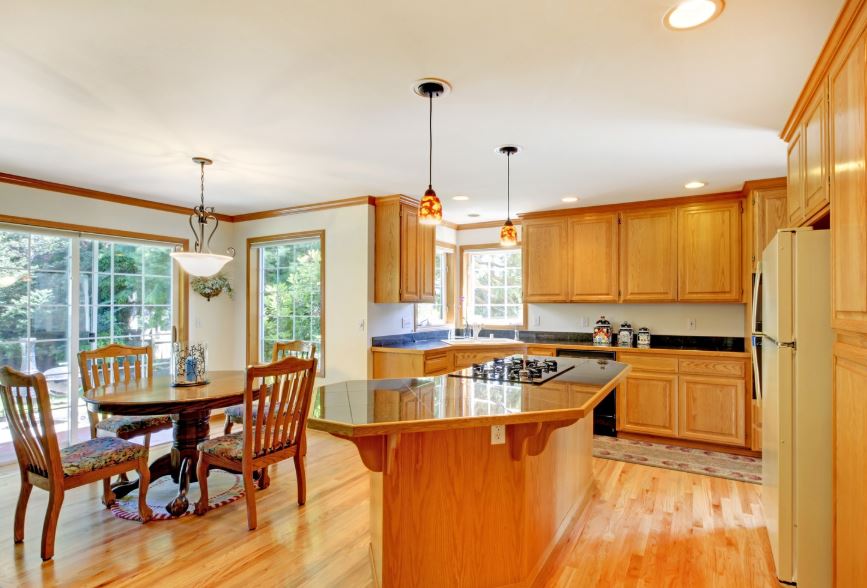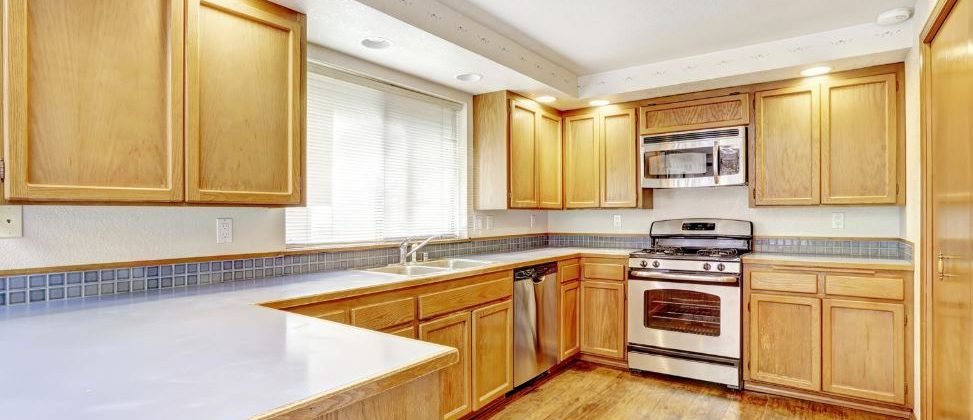Wood Floors for the Kitchen
If you want to bring a timeless charm to your home, installing wood floors is one way to go. However, this flooring option is not usually ideal for installing in the kitchen.
The kitchen is one of the areas of the home that deals with moisture and water. And as you know, wood and water don’t mix well.
However, before you write off wood as a flooring option in the kitchen, let’s first examine its pros and cons.
In today’s post, we’ll discuss if wood floors are still an ideal option for the kitchen.
Woods Floors in the Kitchen: Advantages
Revered as a sign of elegance and sophistication, hardwood flooring also brings many benefits to a home. Let’s see what the advantages are of a hardwood floor installation in the kitchen.
Visual Appearance
Solid wood floors showcase the beauty of natural wood grains. They can add a depth of beauty to any space – no matter what the interior design or aesthetic of the place is.
If you choose hardwood, you can either purchase unfinished or prefinished floors. They also come in a multitude of hues, shades, and finishes that can fit any kitchen design.

Homeowners with an open-concept design tend to opt for the same flooring style throughout the entire space – from the living room to the kitchen.
This design choice makes the design more cohesive and the space more expansive.
Durability
Natural wood is regarded as a durable flooring product. The thick and durable construction of the wood boards make sanding them down and refinishing a breeze – whenever the boards show signs of wear and tear.
One way to extend the life and appearance of hardwood floors, aside from sanding and refinishing, is to use pads under heavy furniture and the legs of tables and chairs.
Doing this step will prevent dents, dings, and scratches on solid hardwood floors in the kitchen.
You can place area rugs in high-traffic areas of your house. Aside from the added design element, area rugs provide additional protection to hardwood.
Wood Floors in the Kitchen: Disadvantages:
All types of flooring will have their disadvantages. Many factors will affect this list. Some of these factors include the number of people in your home, what your lifestyle is, if you have kids or pets, etc.
Also, a disadvantage to you may not necessarily mean the same thing for another homeowner. Thus, it’s essential to evaluate your needs and preferences to see if hardwood floors will meet your requirements.
Not Resistant to Moisture
This is probably the biggest drawback to a wood floor installation in the kitchen. Prolonged contact to moisture can cause wood to swell, split, or warp.

If you ever have a water leak, that’s not good news for your hardwood flooring.
Also, the inevitable spills in the kitchen as you prepare and eat food can seep in through the seams and joints of wood flooring, which may develop into a more severe issue overtime.
Maintenance
The kitchen is the heart of the home. This also means it’s one of the busiest rooms in any household.
While you can sand and refinish wood flooring in the course of their lifetime, daily maintenance is required to ensure their longevity – especially if they are fitted in your kitchen.
For instance, make sure to immediately wipe up any water or grease splatters that come in contact with the floors.
Alternative Flooring Options
If you still want the look and feel of natural wood floors in your kitchen, make sure that the species of wood you pick has a high hardness and strength scale rating.
It goes without saying that the stronger the wood is, the more resistant it is to moisture and daily wear and tear – especially if you wish to install wood floors in the kitchen.



